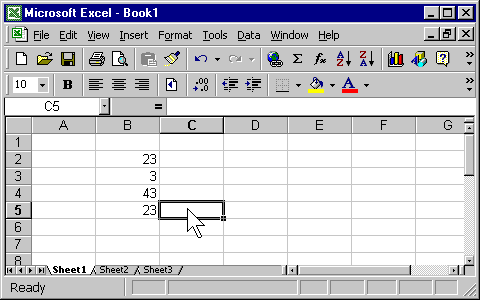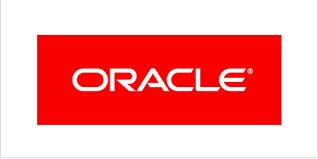Oracle vs SAS vs PostgreSQL vs MySQL vs Microsoft Azure
What is a Data Warehouse?
Many people don't know what a data warehouse is, let alone why they might even need one. A data warehouse is exactly as it sounds - a warehouse (or headquarters) for all your company data. This might include marketing data, customer data, finance data, IT data -- really any type of data you can think of. In order to get one single point of truth for all your data, you need up upload it to a data warehouse so that it can all live together in one place.
A data warehouse makes it much easier to work with very large data sets. It allows you to put them together, take them apart, and see what they look like in comparison to each other. Think of a data warehouse like Excel, times a million.
A data warehouse is where you keep your "data lake."
What is a Data Lake?
Think of it like this, a data warehouse is the hole in the ground and your company data is the water that fills the hole in the ground. Your company data is your data lake.
Right now your company data likely lives all over the place. You can create a unified data lake by slurping all the water from all the different platforms, into a data warehouse, creating a data lake. Improvado is the tool that pushes all your water [data] into that lake-- but we can talk more about that later.
At what point does a company need a Data Warehouse?
Usually a company is ready for a data warehouse once they have so much data that they've outgrown Excel and they have someone on staff with a basic understanding of data science analytics or someone who knows how to use SQL and can manage a data warehouse.
How do you know if you've outgrown Excel? Since the tool has a row limit and a loading limit, updating sheets usually starts to get slow. Usually small agencies or businesses use Excel or Google Spreadsheets until they get to that point, and then it's time to upgrade to a Data Warehouse.
If different teams within one company are looking to match up their data together to get an important insight, for example, the marketing team wanting to map it's data with data from the finance team, a data warehouse would be helpful.
If a business is looking to build customized models and algorithms through business intelligence data-- that is something that might not be possible through out of the box reporting platforms.
An example of a customized model would be as follows:
Let’s say Company A has a Google Bitquery Data Warehouse and they found out that due to specific customer behavior data, they are able to build their own formula that can tell them exactly what to do to optimize their marketing ad spend. This is a formula that is proprietary to them and their business model and flow. Other examples of customized models or algorithms would include operational inventory checks, customer data, and accounting.
How do you pull reports from a Data Warehouse?
Historically, in order to pull any meaningful data from your data warehouse, someone on your team would need to know SQL and could query the data warehouse by writing a question in the language of SQL. This process is not automated, which means people are often asking lots of one-off requests to the one guy who knows SQL on the team.
However, now Visualization tool have made this process easier. Your Visualization tool, (whether it's Looker, Tableau, Google Data Studio) sits on-top of your data warehouse and makes it possible for anyone to query the data and create reports and charts and visualizations and dashboards.
How do you get your data into a Data Warehouse?
This part has historically been pretty tricky. That's because your company data lives in dozens of different tools. Marketing data is particularly difficult to wrangle. For example Company A might have data in Salesforce, Google Analytics, Facebook Ads Manager, Google Ads, Mailchimp, Adroll, and more.
There are 3 ways to get data into your Data Warehouse:
1- Manually Uploading Data
Exporting data from each platform separately into spreadsheets on a daily, weekly or monthly basis and uploading it into your data warehouse

Pros:
There are no benefits to performing this process manually
Cons:
- This process is time consuming.
- It's also expensive from an opportunity cost standpoint.
- Instead of focusing on high value strategic decisions and gathering insights, most marketers are focusing on low value data cleansing and spreadsheeting.
- Greater probability for human error when copy and pasting data.
- The manual process takes up 10-40 hours per week and leaves little time for actual analysis. Marketers need access to data in real-time.
2- Code your own API integrations
Utilize your in-house developers to build and manage APIs that sync with each platform in order to aggregate data into your data warehouse.

Pros: This route will save marketers a lot of time, by shifting the manual workload to be automated by developers.
Cons: There are quite a few issues with this route:
- It will require a lot of time for developers to build various API integrations for the data warehouse.
- Any new API integration requests will compete for development time vs. other projects at the agency. This can often lead to a half automated, half manual process. Defeating the purpose altogether.
- Supporting integrations will be time consuming due to stability issues and new feature releases. It is a maintenance nightmare to take on this task.
- There are many other nuances that constantly arise like platform limitations, data clearance and normalization, dealing with errors, and more.
3- Use a Data Aggregation Tool
Instead of building all your own API integrations internally, use a tool that automates this for you in minutes. It's a plug & play way to get all your data into your data warehouse in a matter of clicks.
For example, by simply logging onto Improvado you can sync with over 100 different marketing platforms, where data is instantly pulled into your data warehouse or the one Improvado provides for you. That way you can use the tool to map metrics, pull reports, and visualize data faster than ever before possible.

Pros:
- No need to ask developers for help. It's easy for any marketer to aggregate data from multiple platforms into BI, visualization, or spreadsheets.
- High-touch customer service to help you customize your reports and dashboards.
- 100+ integrations that include everything from Facebook to Snapchat to Linkedin and so much more.
- Perfect for Marketing Leaders & Analytics Leaders looking to build a clean flow of data that puts an end to one-off marketing/developer requests, once and for all!
Cons:
- Marketers may still want to use a visualization or BI tool like Looker, Tableau or Data Studio, but they also have the option to view their data in Improvado’s custom visualization tool.
Key takeaway: Improvado is a great data aggregation tool that can send all of your data to any data warehouse you choose with ease, saving you time and effort.
Harvard Business Review and Alteryx ran a study that found that while we all agree that marketing analytics is critically important, executives are not getting what they need out of the tools they’re using.
.png)
Our mission is to help marketers find the marketing analytics tools they need to make reporting and optimization a breeze.
These top Data Warehousing tools all have their own benefits when it comes to storing and analyzing data. Once you have your data warehouse tool, having a tool like Improvado that can aggregate your data from all of the platforms you use and send this data to your data warehouse can be extremely useful.
Each of the following data warehousing tools vary, and there are pros and cons to each tool. Read through them carefully to determine which tool is the right fit for your marketing needs.
1.Oracle


What is Oracle?
The Oracle autonomous data warehouse software is a collection of data that is treated as a unit. The idea behind the database is to store and retrieve related data. Oracle manages large amounts of data and allows multiple users to access the same information.
The “autonomous” data warehouse tool offers real application testing, working for both real application and single-instance clusters. Another features is a Hi-Speed Connection, which allows for huge amounts of data to be moved quicker. Oracle works seamlessly with Windows and Linux platforms, and offers virtualization support, allowing connection to a remote database, view, or table.
Pros:
- Ease of set up and computing power
- Numerous features and possible customizations
- Intuitive graphic tools
Cons:
- Complexity. Learning curve for some users.
- For DBA without experience, a configuration is complicated by the amount of details that must be considered.
- A bit expensive, so it is not accessible to everyone.
Reviews
“I really think it's the best DBMS I've used, the dream of any database administrator”
“Oracle database comes with tons of features which many of the other databases don't have.”
Pricing
No pricing information is readily available on the website. You can contact the company to request a quote.
Video
2. SAS
.png)

What is SAS?
SAS is one of the leading data warehouse tools, allowing users to access data across many different sources. SAS Data Management can perform complex analyses and deliver information across organizations
With SAS, activities are managed from central locations, providing users with the ability to access the tool remotely, from wherever they are, as long as they are connected to the internet. This makes it extraordinarily convenient for marketers to access the information that they need. Raw data files can be viewed in external databases, and data can be managed using various data tools, as well as data displayed in statistical graphics and reports.
Pros:
- GUI is easy to understand
- Training provided by SAS
- Allows you to easily create complex models
- Built-in quality knowledge base and ability to create customized QKBs
Cons:
- Sometimes errors are not easy to understand
- SAS is too pricey for some companies, and doesn't make itself accessible by offering discounted packages
- Learning curve for those with no SAS experience
Reviews
“A powerful tool for big data management”
“SAS is an amazing software that make statistical analysis. It is very accurate and gives you a lot of detailed data.”
Pricing
No pricing information is available on the website. You can contact the company for a quotes, demos, and free trials.
Video
3. PostgreSQL
.png)

What is PostgreSQL?
PostgreSQL is a powerful, open source object-relational database system with over 30 years of active development that has earned it a strong reputation for reliability, feature robustness, and performance. Their website says that they are The World's Most Advanced Open Source Relational Database.
Pros:
- PostgreSQL comes with many features aimed to help developers build applications, administrators to protect data integrity and build fault-tolerant environments, and help you manage your data no matter how big or small the dataset.
- In addition to being free and open source, PostgreSQL is highly extensible. For example, you can define your own data types, build out custom functions, even write code from different programming languages without recompiling your database!
Cons:
- It can be a bit harder to get community support.
- Reported issues with scale.
- Replication is not yet as well implemented.
Reviews
“The power of PL / pgSQL is excellent, it allows me to program commercial layers in the database without any problem this improves the response times of the final applications and allows investments in hardware in the database servers instead of in the application.”
“It can handle workloads ranging from small web applications to large data warehousing with many parallel users.”
Pricing
- Not provided by vendor.
4.MySQL
.png)

What is MySQL?
Oracle MySQL Cloud Service delivers a secure, cost-effective and enterprise-grade MySQL database service. Built on MySQL Enterprise Edition and powered by the Oracle Cloud, it provides a simple, automated, integrated and enterprise ready MySQL cloud service, enabling organizations to increase business agility and reduce costs.
According to their site, MySQL is the most comprehensive set of advanced features, management tools and technical support, which allows you achieve the highest levels of MySQL scalability, security, reliability, and uptime.
Pros:
- Easy to Use - MySQL Cloud Service provides a simple and user-friendly, web-based console to manage your MySQL Cloud instances.
- Self-service Provisioning - Create preconfigured MySQL databases optimized for performance, and cloud tooling automates database instance lifecycle management.
- Elastic Scalability - Automated scaling enables users to elastically scale compute and storage resources as well as MySQL replicas.
- High Availability - MySQL Replication and MySQL Replication monitoring improve application uptime and minimize service disruptions.
- Multi-layered Security - MySQL Cloud Service offers enterprise-grade security features including network access control, MySQL Enterprise Firewall, MySQL Enterprise Authentication, MySQL Enterprise Encryption & Transparent Data Encryption and MySQL Enterprise Audit.
- Backup and Recovery - MySQL Cloud Service supports hot, online backup, point-in-time recovery and on-demand snapshots.
Cons:
- Hard to scale
- Performance degrade
Reviews
“Once you become familiar with the features and the commands, you will find it is super easy and flexible to operate.”
“Ever since I began using the software, I felt this bond with the ease of use, ease to remember commands and a large community support backed by tons of online documentations and tutorials. I would say this is one of my best experience using any software and would highly recommend for beginners and power users.”
Pricing
- Not provided by vendor
5. Microsoft Azure


What is Microsoft Azure?
Migrate your SQL Server databases without changing your apps. Azure SQL Database is the intelligent, fully managed relational cloud database service that provides the broadest SQL Server engine compatibility. Accelerate app development and simplify maintenance using the SQL tools you love to use. Take advantage of built-in intelligence that learns app patterns and adapts to maximize performance, reliability, and data protection.
Pros:
- Migrate your SQL Server databases without changing your apps
- Migrate massive databases and scale up to 100 TB
- Maximize ROI by migrating to the cloud
- Security
- Scalability
- Cost-effectiveness
Cons:
- Requires management
- Requires platform expertise
Reviews
“ Azure. The ease of which you can spool up new websites, databases, or even entire virtual machines is incredible. You can do in minutes what would take you hours to do on site. Setting up communication between resources is also quite easy.”
“Before Azure, it was a real pain to plan deployments of both new and updates to the web. With Azure, everything is central and easily managed. I can spin up new apps, update existing apps, scale up or down on resources, and the list just goes on.”
Pricing
You will need to contact the company for pricing details.
Our recommendations:
Check out our Top 25 Best Database Management Software in 2021
Supermetrics VS Funnel.io VS Improvado - A Comprehensive Comparison
.png)





.png)
